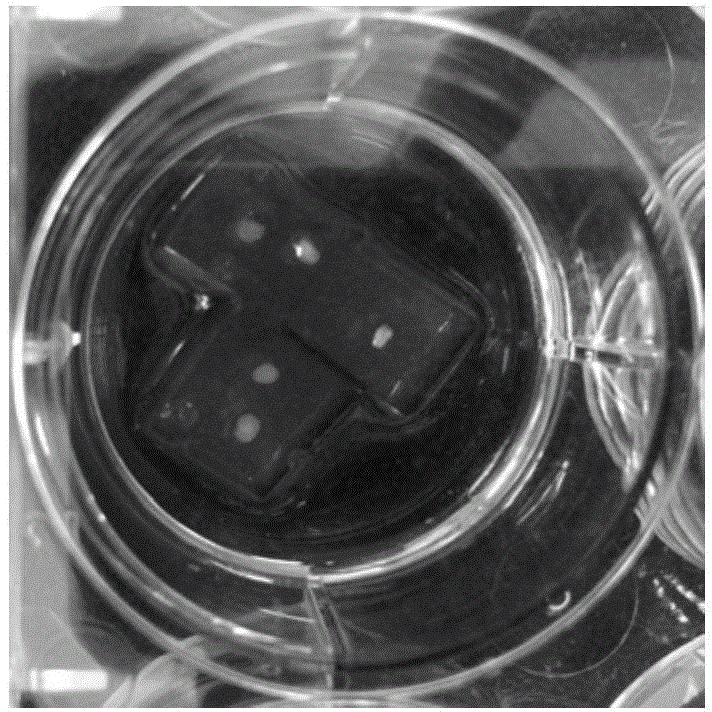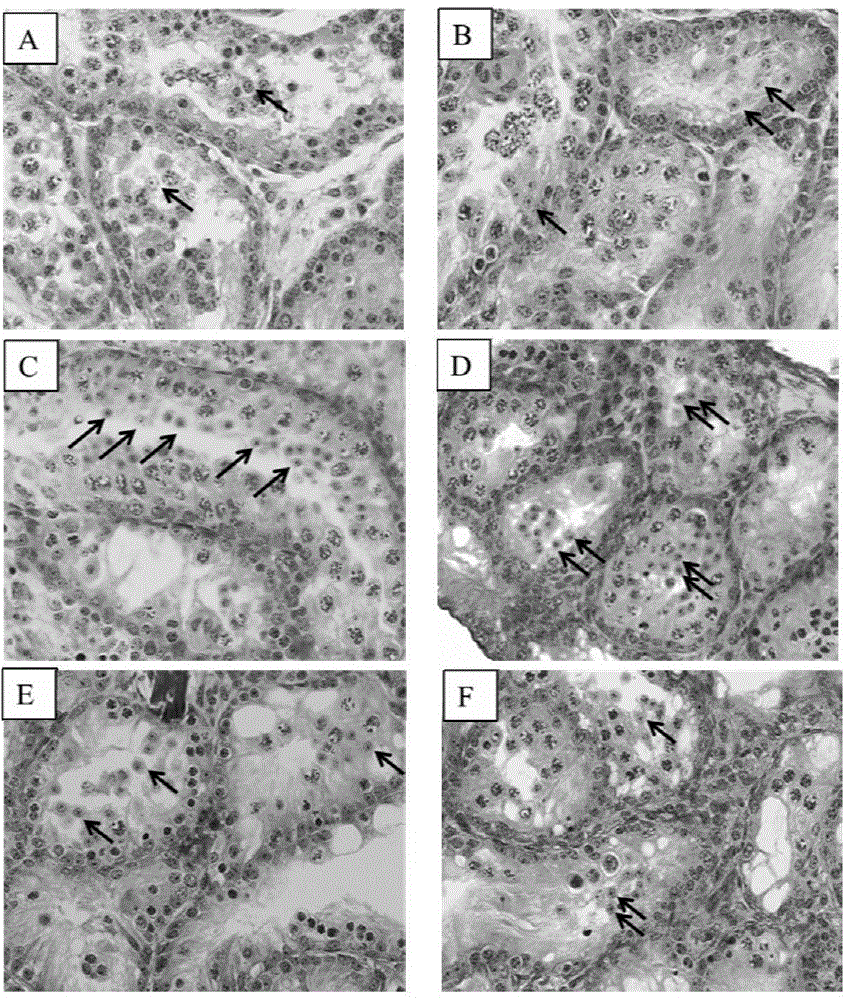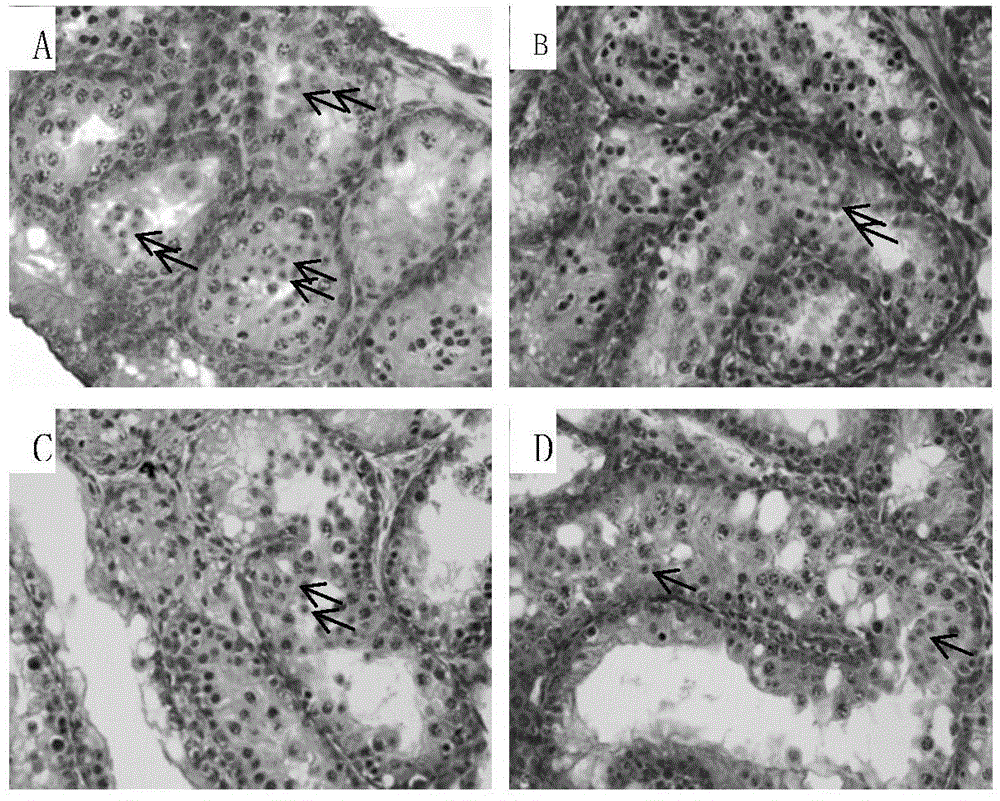Method for in vitro culture of testis tissues and induction to generate spermatid
A technology for in vitro culture of sperm cells, applied in the field of cell engineering, can solve the problems of low haploid, no long sperm, etc., and achieve the effect of sufficient nutrition
- Summary
- Abstract
- Description
- Claims
- Application Information
AI Technical Summary
Problems solved by technology
Method used
Image
Examples
Embodiment 1
[0035] Embodiment 1 newborn testicular tissue culture round spermatozoa
[0036] 1. Preparation of culture gel blocks
[0037] (1) Preparation of culture medium: the composition and content of the culture medium are: 90% MEMα (invitrogen product number: 11120-022) + 10% KSR (invitrogen product number: 10828).
[0038] (2) Preparation of agarose gel: take 33ml of ultrapure water, add 0.396g of agarose, autoclave at 121°C for 20 minutes to make 1.2% agarose gel, and pour it into a 10cm cell culture plate;
[0039] (3) Preparation of cultured gel blocks: After the agarose gel is solidified, cut the gel blocks into 10×10×5mm gel blocks, place the cut gel blocks in a 6-well plate, put 3 gel blocks in each well, Then add 4.5ml prepared medium to each well to soak the gel block in the medium. After soaking overnight, suck off the old medium and add 1.9ml fresh medium to make the liquid level of the medium reach the height of the gel block. In 4 / 5 places, tissue culture can be perfo...
Embodiment 2
[0047] Example 2 newborn testis tissue culture elongated sperm
[0048] 1. Preparation of culture gel blocks
[0049] Method is with embodiment 1.
[0050] 2. Cultivate the testis tissue of newborn 10.5 days, 12.5 days, 13.5 days and 14.5 days, take the testes of mice, remove the outer layer of white membrane, and divide into 1mm 3 sized tissue samples. Place the tissue samples on the aforementioned gel blocks respectively, put 3 pieces of testicular tissue in each gel block, place the 6-well plate at 34°C, 5% CO 2 Cultures were carried out in a cell culture incubator, and the medium was changed every 4.5 days.
[0051] Taking the testicular tissue samples of 12.5 days old as an example, HE staining was carried out on the tissue samples cultured for 27 days to 40 days respectively, and the observation results (such as Figure 7 Shown), A, B, and C in the figure are the results after 27 days, 31 days, and 40 days of newborn 12.5-day mouse testis tissue culture respectively....
PUM
 Login to View More
Login to View More Abstract
Description
Claims
Application Information
 Login to View More
Login to View More - R&D
- Intellectual Property
- Life Sciences
- Materials
- Tech Scout
- Unparalleled Data Quality
- Higher Quality Content
- 60% Fewer Hallucinations
Browse by: Latest US Patents, China's latest patents, Technical Efficacy Thesaurus, Application Domain, Technology Topic, Popular Technical Reports.
© 2025 PatSnap. All rights reserved.Legal|Privacy policy|Modern Slavery Act Transparency Statement|Sitemap|About US| Contact US: help@patsnap.com



